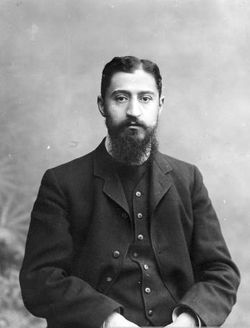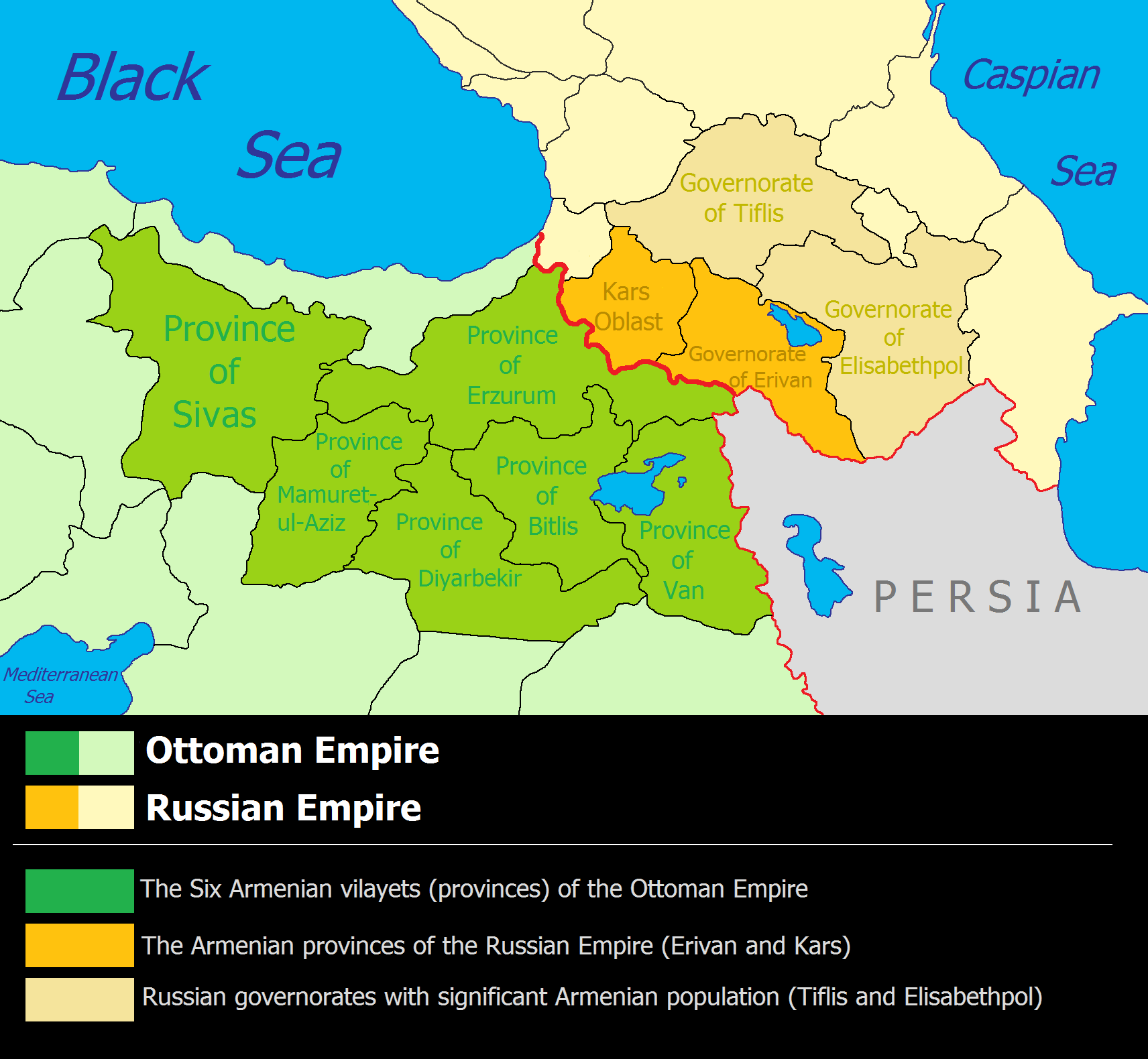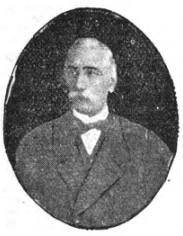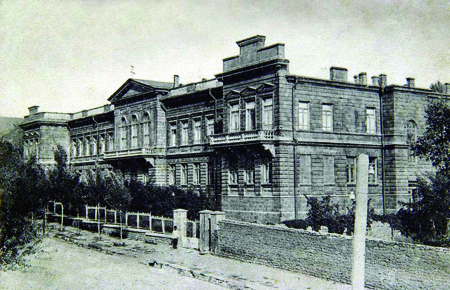|
Hrachia Acharian
Hrachia Acharian ( hy, Հրաչեայ Աճառեան, reformed spelling: Հրաչյա Աճառյան ; 8 March 1876 – 16 April 1953) was an Armenian linguist, lexicographer, etymologist, and philologist. An Istanbul Armenian, Acharian studied at local Armenian schools and at the Sorbonne, under Antoine Meillet, and the University of Strasbourg, under Heinrich Hübschmann. He then taught in various Armenian communities in the Russian Empire and Iran before settling in the Armenian Soviet Socialist Republic in 1923, working at Yerevan State University until his death. A distinguished polyglot, Acharian compiled several major dictionaries, including the monumental ''Armenian Etymological Dictionary'', extensively studied Armenian dialects, compiled catalogs of Armenian manuscripts, and authored comprehensive studies on the history of Armenian language and alphabet. Acharian is considered the father of Armenian linguistics. Life Acharian was born to Armenian parents in Consta ... [...More Info...] [...Related Items...] OR: [Wikipedia] [Google] [Baidu] |
Istanbul
Istanbul ( , ; tr, İstanbul ), formerly known as Constantinople ( grc-gre, Κωνσταντινούπολις; la, Constantinopolis), is the List of largest cities and towns in Turkey, largest city in Turkey, serving as the country's economic, cultural and historic hub. The city straddles the Bosporus strait, lying in both Europe and Asia, and has a population of over 15 million residents, comprising 19% of the population of Turkey. Istanbul is the list of European cities by population within city limits, most populous European city, and the world's List of largest cities, 15th-largest city. The city was founded as Byzantium ( grc-gre, Βυζάντιον, ) in the 7th century BCE by Ancient Greece, Greek settlers from Megara. In 330 CE, the Roman emperor Constantine the Great made it his imperial capital, renaming it first as New Rome ( grc-gre, Νέα Ῥώμη, ; la, Nova Roma) and then as Constantinople () after himself. The city grew in size and influence, eventually becom ... [...More Info...] [...Related Items...] OR: [Wikipedia] [Google] [Baidu] |
Yerevan State University
Yerevan State University (YSU; hy, Երևանի Պետական Համալսարան, ԵՊՀ, ''Yerevani Petakan Hamalsaran''), also simply University of Yerevan, is the oldest continuously operating public university in Armenia. Founded in 1919, it is the largest university in the country. It is thus informally known as Armenia's "mother university" (Մայր ԲՈւՀ, ''Mayr Buh''). Of its 3,150 employees, 1,190 comprise the teaching staff, which includes 25 academicians, 130 professors, 700 docents (associate professors), and 360 assistant lecturers. The university has 400 researchers, 1,350 post-graduate students, and 8,500 undergraduates, including 300 students from abroad. Instruction is in Armenian, but instruction in Russian or English for foreign students is available as needed. The academic year is from September 1 through June 30. According to University Ranking by Academic Performance (URAP), it was the top-ranked university in Armenia and the 954th in the world in 2 ... [...More Info...] [...Related Items...] OR: [Wikipedia] [Google] [Baidu] |
Russian Armenia
Russian Armenia is the period of Armenian history under Russian rule from 1828, when Eastern Armenia became part of the Russian Empire following Qajar Iran's loss in the Russo-Persian War (1826–1828) and the subsequent ceding of its territories that included Eastern Armenia per the out coming Treaty of Turkmenchay of 1828.Timothy C. Dowlin''Russia at War: From the Mongol Conquest to Afghanistan, Chechnya, and Beyond''pp 729 ABC-CLIO, 2 dec. 2014 Eastern Armenia remained part of the Russian Empire until its collapse in 1917. Background For hundreds of years, the inhabitants of Eastern Armenia lived under the rule of successive Iranian empires. Starting from the early 16th century, up to 1828, Eastern Armenia was ruled by the Iranian Safavid, Afsharid, and Qajar dynasties. Subsequent wars between the Ottoman and Safavid empires led to the destruction of many of the Armenian towns, and made Armenian life difficult. Added to this, the Christian Armenians were dhimmi subject ... [...More Info...] [...Related Items...] OR: [Wikipedia] [Google] [Baidu] |
Laz Language
The Laz language (; ka, ლაზური ენა/ჭანური ენა, tr; tr, Lazca, tr) is a Kartvelian language spoken by the Laz people on the southeastern shore of the Black Sea. In 2007, it was estimated that there were around 20,000 native speakers in Turkey, in a strip of land extending from Melyat to the Georgian border (officially called Lazistan until 1925), and around 1,000 native speakers around Adjara in Georgia. There are also around 1,000 native speakers of Laz in Germany. Laz is not a written language nor a literary language. According to Benninghaus, the Laz themselves have no interest in writing in Laz. Classification Laz is one of the four Kartvelian languages. Along with Mingrelian, it forms the Zan branch of this Kartvelian language family. The two languages are very closely related, to the extent that some linguists refer to Mingrelian and Laz as dialects or regional variants of a single ''Zan language'', a view held officially in the ... [...More Info...] [...Related Items...] OR: [Wikipedia] [Google] [Baidu] |
Société De Linguistique De Paris
The Société de Linguistique de Paris (established 1864) is the editing body of the ''BSL'' (''Bulletin de la Société de Linguistique'') journal. Members of the society have included such well-known French linguists as Bréal, Saussure, Meillet, and Benveniste The Spanish Benveniste family is an old, noble, wealthy, and scholarly Jewish family of Narbonne, France and northern Spain established in the 11th century. The family was present in the 11th to the 15th centuries in Hachmei Provence, France, Barc .... In addition to its monthly meetings, the group holds a one-day conference each January dedicated to a particular topic. In 1997, it organised the '' Congrès International des Linguistes'' in Paris. References External links *http://www.slp-paris.com/ Linguistic societies Organizations based in Paris {{ling-org-stub ... [...More Info...] [...Related Items...] OR: [Wikipedia] [Google] [Baidu] |
Erzurum
Erzurum (; ) is a city in eastern Anatolia, Turkey. It is the largest city and capital of Erzurum Province and is 1,900 meters (6,233 feet) above sea level. Erzurum had a population of 367,250 in 2010. The city uses the double-headed eagle as its coat-of-arms, a motif that has been a common symbol throughout Anatolia since the Bronze Age. Erzurum has winter sports facilities and hosted the 2011 Winter Universiade. Name and etymology The city was originally known in Armenian as Karno K'aghak' ( hy, Կարնոյ քաղաք), meaning city of Karin, to distinguish it from the district of Karin ( Կարին). It is presumed its name was derived from a local tribe called the Karenitis. Darbinian, M. "Erzurum," Armenian Soviet Encyclopedia. Yerevan: Armenian Academy of Sciences, 1978, vol. 4, p. 93. An alternate theory contends that a local princely family, the Kamsarakans, the Armenian off-shoot of the Iranian Kārin Pahlav family, lent its name to the locale that eventually bec ... [...More Info...] [...Related Items...] OR: [Wikipedia] [Google] [Baidu] |
Sanasarian College
The Sanasarian College ( hy, Սանասարեան վարժարան) was an Armenian-language educational institution in the city of Erzurum (called Karin by Armenians), Ottoman Empire founded in 1881 by an Armenian merchant, Mkrtich Sanasarian. Its students were children of primary and secondary school age. It also had a pedagogical department for the training of Armenian teachers and a trade school. Description It was a school of high grade which consisted of teachers who were mostly educated in Germany. The college had a nine-year course, with a high grade education that was taught. The school lasted until the Armenian genocide, when most of the teachers were killed and the building was ruined. Sanasarian college was a foremost institution for Armenian culture and education in the eastern provinces during the decades before World War I. English explorer, writer, and natural historian Isabella Bird (1831–1904) described the college as follows: After the Armenian genocide, ... [...More Info...] [...Related Items...] OR: [Wikipedia] [Google] [Baidu] |
Kadıköy
Kadıköy (), known in classical antiquity and during the Roman and Byzantine eras as Chalcedon ( gr, Χαλκηδών), is a large, populous, and cosmopolitan district in the Asian side of Istanbul, Turkey, on the northern shore of the Sea of Marmara. It partially faces the historic city centre of Fatih on the European side of the Bosporus. One of the expensive neighborhood in Istanbul. Kadıköy is also the name of the most prominent neighbourhood of the district, a residential and commercial area that, with its numerous bars, cinemas and bookshops, is the liberal cultural centre of the Anatolian side of Istanbul. Kadıköy became a district in 1928 when it was separated from Üsküdar district. The neighbourhoods of İçerenköy, Bostancı and Suadiye were also separated from the district of Kartal in the same year, and eventually joined the newly formed district of Kadıköy. Its neighbouring districts are Üsküdar to the northwest, Ataşehir to the northeast, Maltepe t ... [...More Info...] [...Related Items...] OR: [Wikipedia] [Google] [Baidu] |
Yerevan University
Yerevan State University (YSU; hy, Երևանի Պետական Համալսարան, ԵՊՀ, ''Yerevani Petakan Hamalsaran''), also simply University of Yerevan, is the oldest continuously operating public university in Armenia. Founded in 1919, it is the largest university in the country. It is thus informally known as Armenia's "mother university" (Մայր ԲՈւՀ, ''Mayr Buh''). Of its 3,150 employees, 1,190 comprise the teaching staff, which includes 25 academicians, 130 professors, 700 docents (associate professors), and 360 assistant lecturers. The university has 400 researchers, 1,350 post-graduate students, and 8,500 undergraduates, including 300 students from abroad. Instruction is in Armenian, but instruction in Russian or English for foreign students is available as needed. The academic year is from September 1 through June 30. According to University Ranking by Academic Performance (URAP), it was the top-ranked university in Armenia and the 954th in the wor ... [...More Info...] [...Related Items...] OR: [Wikipedia] [Google] [Baidu] |
Getronagan Armenian High School
Getronagan is an Armenian minority high school in the Karaköy district of Istanbul, Turkey, The school is attached to the Saint Gregory the Illuminator Church. Establishment With the sponsorship of Archbishop Nerses Varjabetyan, Getronagan High School opened its doors on September 1, 1886. The Catholicos of All Armenians (the religious leader of all Armenians), Magar, and Harutyun Archbishop Vehabetyan, the Patriarch of Armenians in İstanbul, conducted the opening commencement. Minas Cheraz became its first principal. Today Getronagan teaches both sexes. In 2001, the school had 182 students. The school teaches mainly in Turkish, but it also has Armenian language and literature and religion classes. English (compulsory), French and Spanish (both optional) are taught as foreign languages. Notable alumni * Hrachia Adjarian - linguist * Vazken Andréassian - engineer * Şahan Arzruni - pianist * Hayko Cepkin - singer * Onnik Chifte-Saraf - writer * Arshag Chobanian - wr ... [...More Info...] [...Related Items...] OR: [Wikipedia] [Google] [Baidu] |
Samatya
Samatya ( el, Ψαμάθεια, pr. ''Psamatheia''; hy, Սամաթիա) is a quarter of the Fatih district of Istanbul. It is located along the Marmara Sea, and borders to the west on the neighborhood of Yedikule (the "Castle of the Seven Towers"). Etymology The name originates from the Greek word ''psamathion'' (), meaning "sandy", because of the great quantity of sand found in the quarter. History About 383 AD, the first monastic institution was established in Constantinople, at Psamatheia, at that time still outside the walled city.Tsai, Kathryn (Dr). ''A Timeline of Eastern Church History''. Divine Ascent Press, CA, 2004. p.73. Up to recent times, Samatya was mostly inhabited by Armenians, who were settled here in 1458 by Sultan Mehmet II,Müller-Wiener (1977), p. 200 and who own there the church of '' Surp Kevork'', also called ''Sulu Manastiri'' (Water's monastery) – previously an Eastern Orthodox church which dates back to before the Ottoman conquest, and by Greek ... [...More Info...] [...Related Items...] OR: [Wikipedia] [Google] [Baidu] |
Shoemaking
Shoemaking is the process of making footwear. Originally, shoes were made one at a time by hand, often by groups of shoemakers, or cobblers (also known as '' cordwainers''). In the 18th century, dozens or even hundreds of masters, journeymen and apprentices (both men and women) would work together in a shop, dividing up the work into individual tasks. A customer could come into a shop, be individually measured, and return to pick up their new shoes in as little as a day. Everyone needed shoes, and the median price for a pair was about one day’s wages for an average journeyman. The shoemaking trade flourished in the eighteenth and early nineteenth centuries but began to be affected by industrialization in the later nineteenth century. Traditional handicraft shoemaking has now been largely superseded in volume of shoes produced by industrial mass production of footwear, but not necessarily in quality, attention to detail, or craftsmanship. Today, most shoes are made on a volum ... [...More Info...] [...Related Items...] OR: [Wikipedia] [Google] [Baidu] |





.jpg)

.jpeg/1200px-GETRONAGAN-VARJARAN_classe1923_(mai_1921).jpeg)
